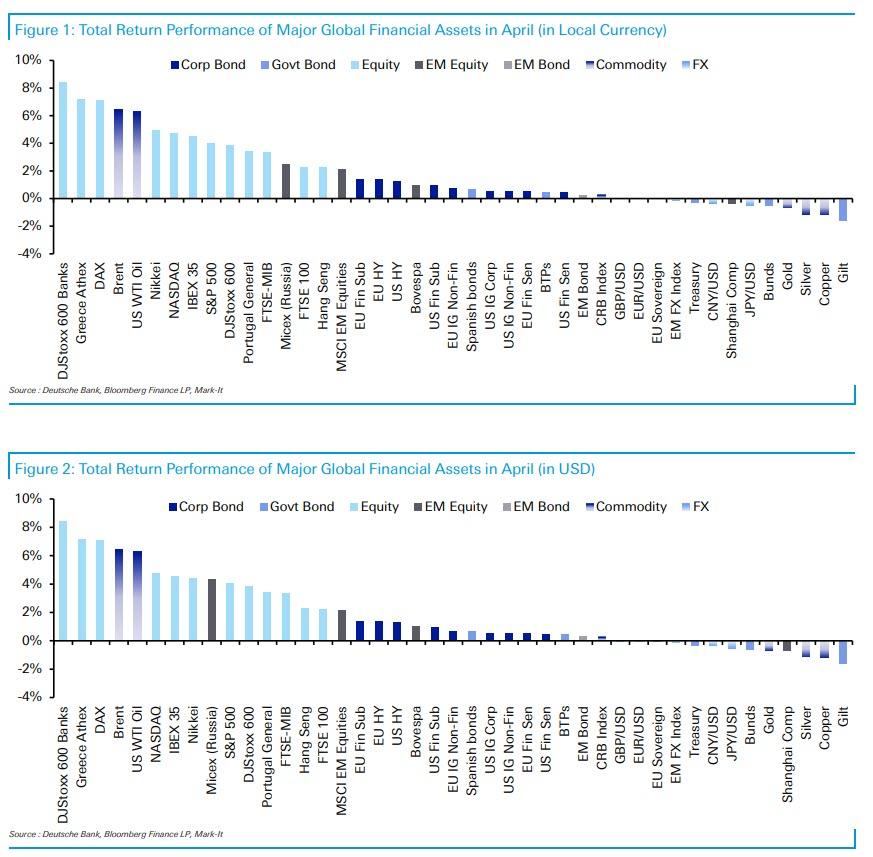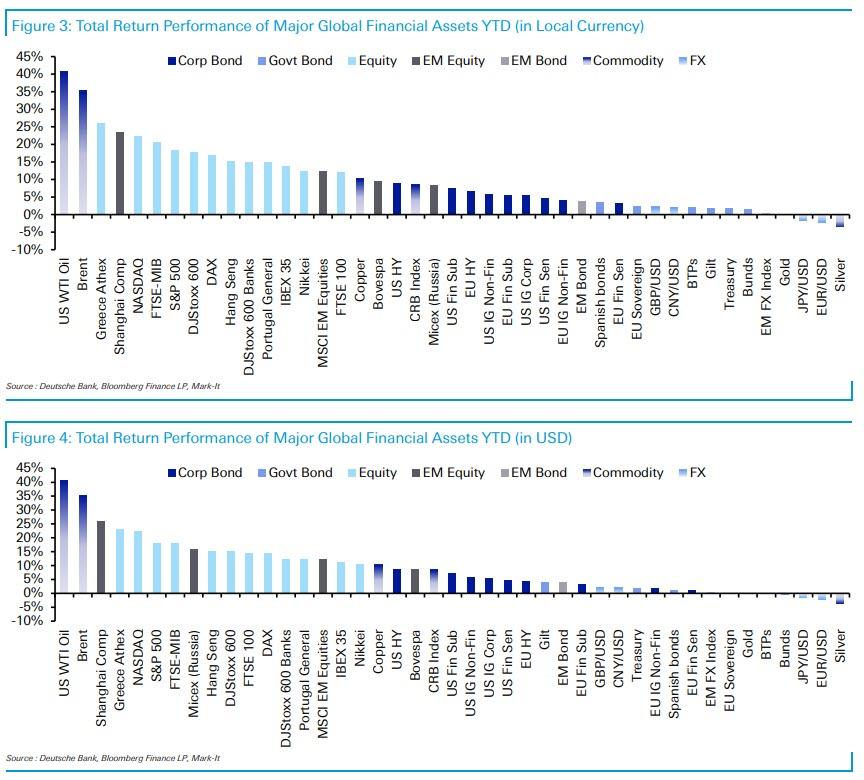"...Best And Worst Performing Assets In April And YTD"
From ZeroHedge:
For stocks, April was certainly not the cruelest month, as the
risk-on rally continued with the S&P 500 posting 4.0% total returns
following the strong 13.6% rally in 1Q. The month ended with a mini
meltup, as the S&P set record highs four times in April on a closing
basis, three of them in the last three trading days of the month.
Overall, the S&P 500 is up 18.2% YTD, 26% since the December low,
and sits 2% above its prior high in September 2018.
As BofA notes, the April rally was led by mega-cap stocks -
the largest 50 stocks outperformed the overall market by 50bps, while
the equal-weight S&P 500 index lagged by 30bps. Global equities also
posted strong gains (but lagged the S&P), rising 3.7% in local
currency terms and 3.4% in USD, with all MSCI regions gaining. US stocks
outperformed other asset classes including bonds (LT Treasuries -1.7% /
IG corp. +0.6%) and cash (+0.2%). The VIX index fell 4% (down 48% YTD),
while gold slipped for the second straight month (-1.0% in April).
It wasn't just the US, however, and as Deutsche Bank writes, there
were strong returns across the board for most equity markets globally as
shown below. Central banks falling into a dovish line one-by-one, data
continuing to favor this goldilocks environment, earnings season so far
being taken positively, trade headlines by and large incrementally more
positive and a continued lack of volatility all contributed to the
favorable backdrop for risk assets, according to the bank's Craig Nicol.
And while returns weren’t quite so spectacular for rates and
commodities, which lagged the broader rally, however, by the end of the
month, 30 of the 38 assets in Deutsche Bank's sample still finished with
a positive total return in local currency terms and also
dollar-adjusted terms. This means that YTD, we’re now at 37 out
of 38 assets up in local currency terms and 35 in dollar terms. In local
currency terms, this is now the strongest start to a year through the
first four months since 2007....MORE



